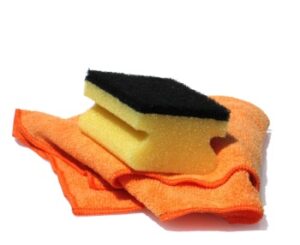
What exactly is soot?
On a chemical level, soot is impure carbon particles created by partial combustion of hydrocarbons. It is usually the flaky or powdery remains of burned matter after a fire. Soot also has a gas phase in which it contains a known human carcinogen. Carcinogens are agents directly involved in causing cancer.
What are common sources of soot?
When most people think of soot a live flame in a fireplace and a chimney come to mind. Soot can also derive from furnaces, coal burning stoves, boilers, incinerating waste, forest fires, and internal combustion engines. More locally, other sources include candles, cooking, oil lamps, and settled dust on halogen bulbs. The source of the soot and the level of oxygen present when burning directly impacts the type of soot created, whether it be dry and dusty or even greasy. You’ll notice soot created when oxygen is reduced around the flame of a candle if you hold heat-safe glass over it for a moment.
Why is soot harmful?
Aside from the carcinogen contained in the gas phase as mentioned above, many different types of soot can pose a number of hazards. Soot such as the type caused by diesel exhaust is harmful to the environment and eyed as a prime subject to air pollution and global warming. Air pollution is hazardous to the environment and the health of humans. Prolonged exposure to soot ridden air pollution can contribute to heart disease.
It’s the incomplete combustion that serves the formation of toxic compounds such as dioxins. You see the negative effects of this during the Industrial Revolution when factories were causing major pollution.
Soot is dangerous when it is not properly maintained in a chimney or other source of ventilation. When it is allowed to build up, it can cause chimney fires, stove hood ventilation issues, or even cause the particles from a fireplace to backdraft into your home. If that happens you may be looking at a large soot cleaning that will require professional services.
Is any soot beneficial?
Soot has been used for pigment in inks and dyes for centuries. Modern day utensils include fountain pens, toner for laser printers, and crayons. To treat rubber, a vulcanization process is used with a soot material called carbon black. In small quantities, dry dusty soot from clean organic material can be beneficial to vegetation when mixed in with the soil. Oil soot is never good for this purpose.
So there’s the good, the bad, and the ugly on soot. What it is, what causes it, and what it can do. If you have any other questions, feel free to write me and I’ll include it in a new segment.
Photo credit to isthatart on stock.xchng


